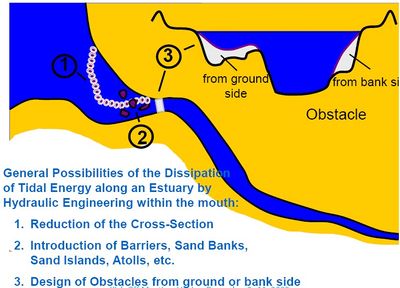Portal:THESEUS/Elbe estuary
The Tidal Elbe River is the artery of the whole region and functions as an important federal waterway. About 4 million people live in the metropolitan region of Hamburg in an area of approximately 19.000 km2. However, the influence of the Tidal Elbe River extends far beyond this area. The Port of Hamburg is an international hub. It is the largest port in Germany and the second largest in Europe.
Together with the other Elbe seaports of Lower Saxony and Schleswig-Holstein the Port of Hamburg is the biggest employer of Northern Germany and as such is indispensably linked to the economic development of Hamburg, Schleswig-Holstein, Lower Saxony and beyond. Scientific results and the observations of the people in this region unfortunately indicate an unfavourable hydromorphological evolution of this essential artery. In a natural estuary the meandering channels and varying bed forms tend to damp down tidal energy but man-made changes together with evolutionary processes have removed this ability so that the flood tide comes in with more energy. These changes call for the development of a strategic action plan that will be based on a concept encompassing many aspects such as fisheries, agriculture, nature conservation, tourism, navigation and economy. An opportunity exists to integrate these into a scheme that will benefit all interests.
Within THESEUS a joint effort between the GKSS Institute for Coastal Research (GKSS), the Hamburg Port Authority (HPA) is proposed. The effort is based on HPA’s Concept for a sustainable development of the Tidal Elbe River as an artery of the metropolitan region Hamburg and beyond and will contribute to an impact assessment of different coastal defence strategies, including innovative ones, under different climate change scenarios. In particular, we will elaborate on the effects of one specific innovative measure, namely of artificial outer sandbanks in the Elbe estuary, on coastal protection in Hamburg and we will compare the effects and the impacts to those of more conventional, i.e. present approaches.


